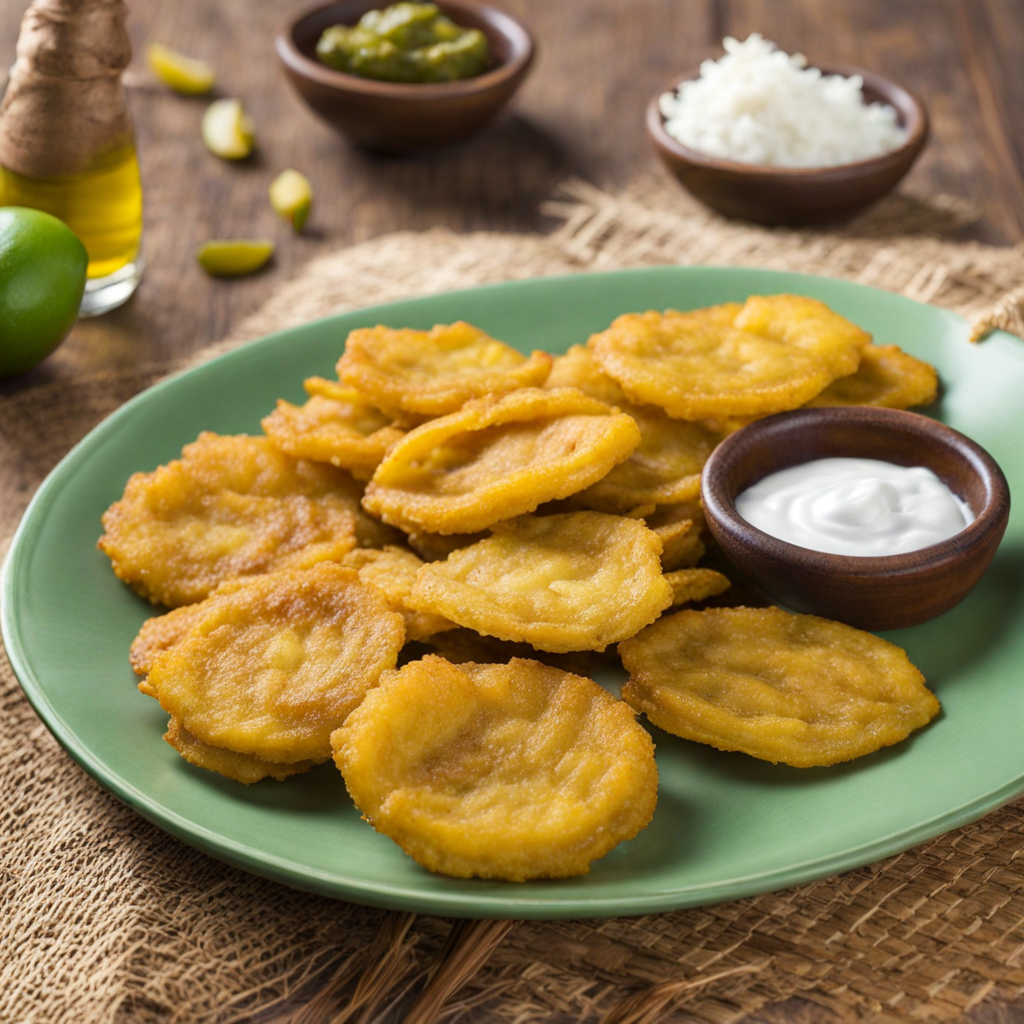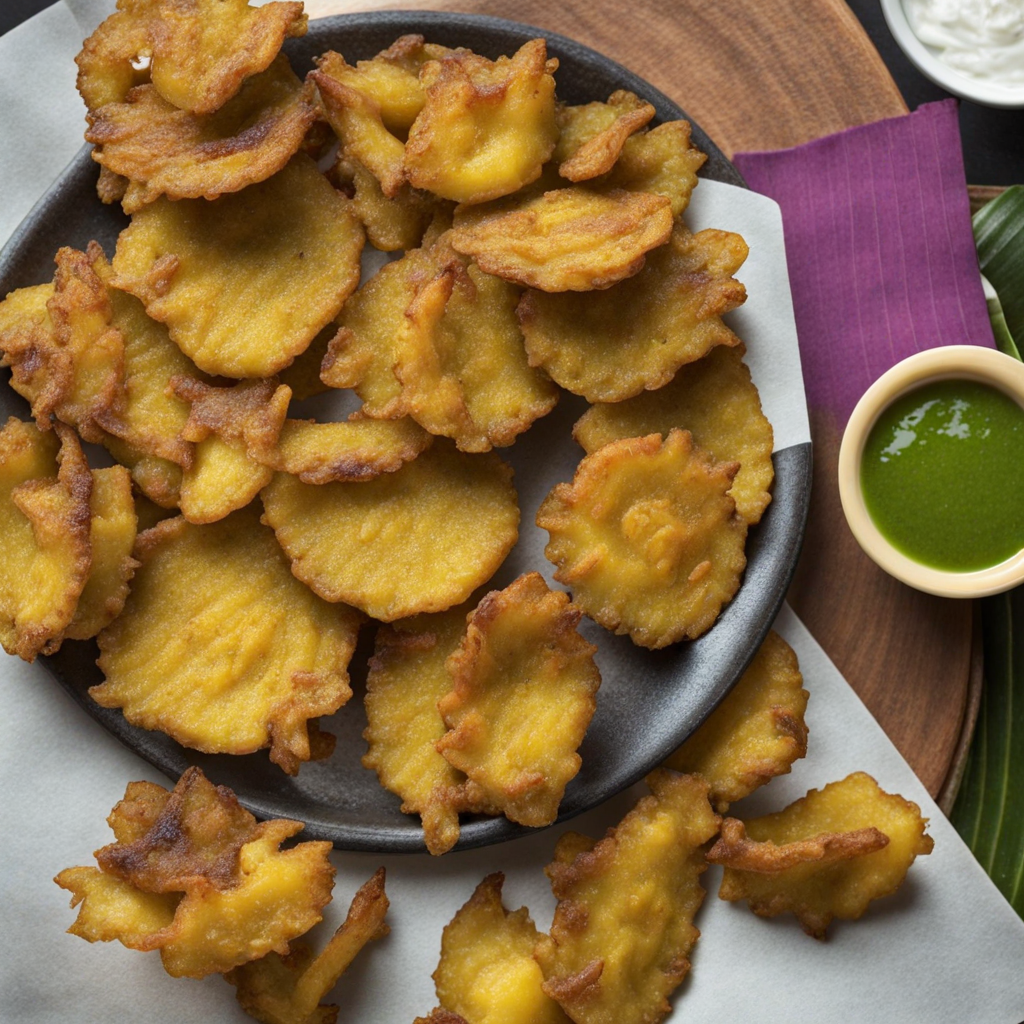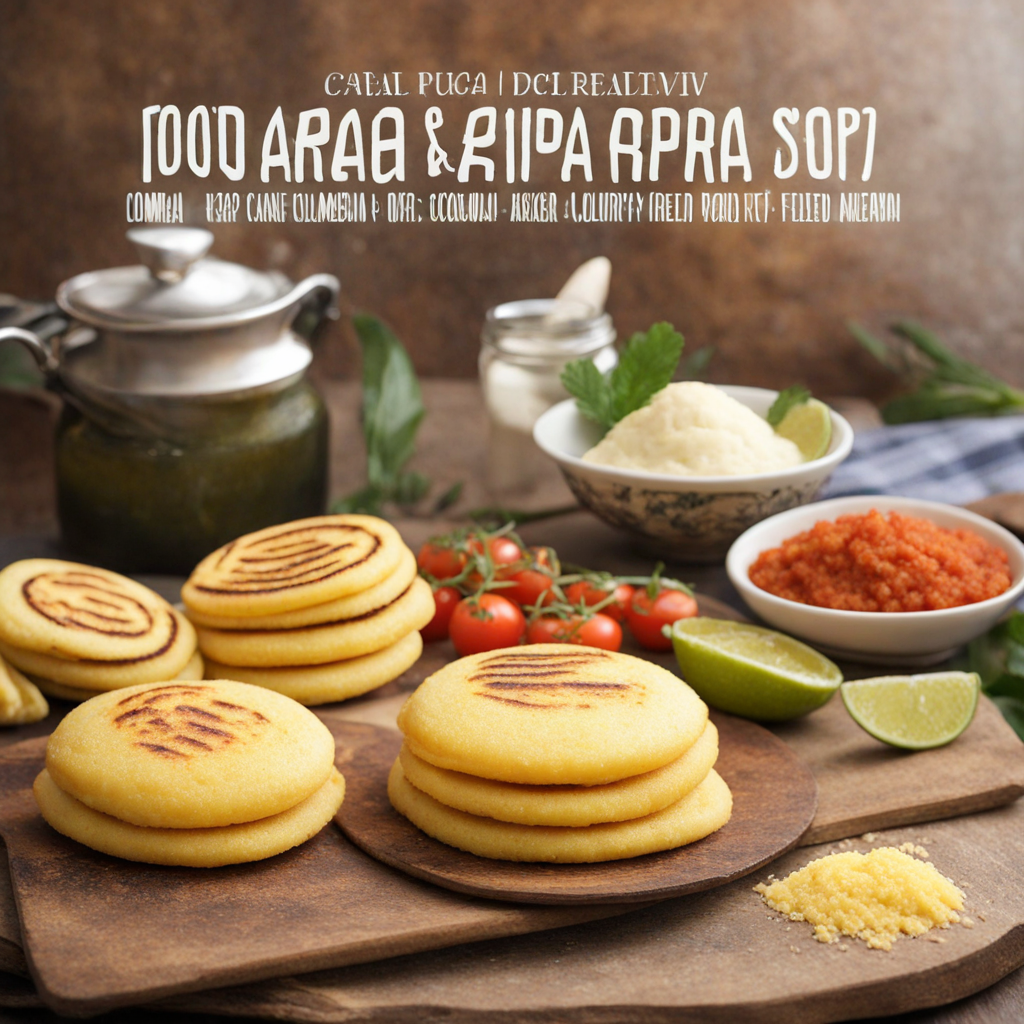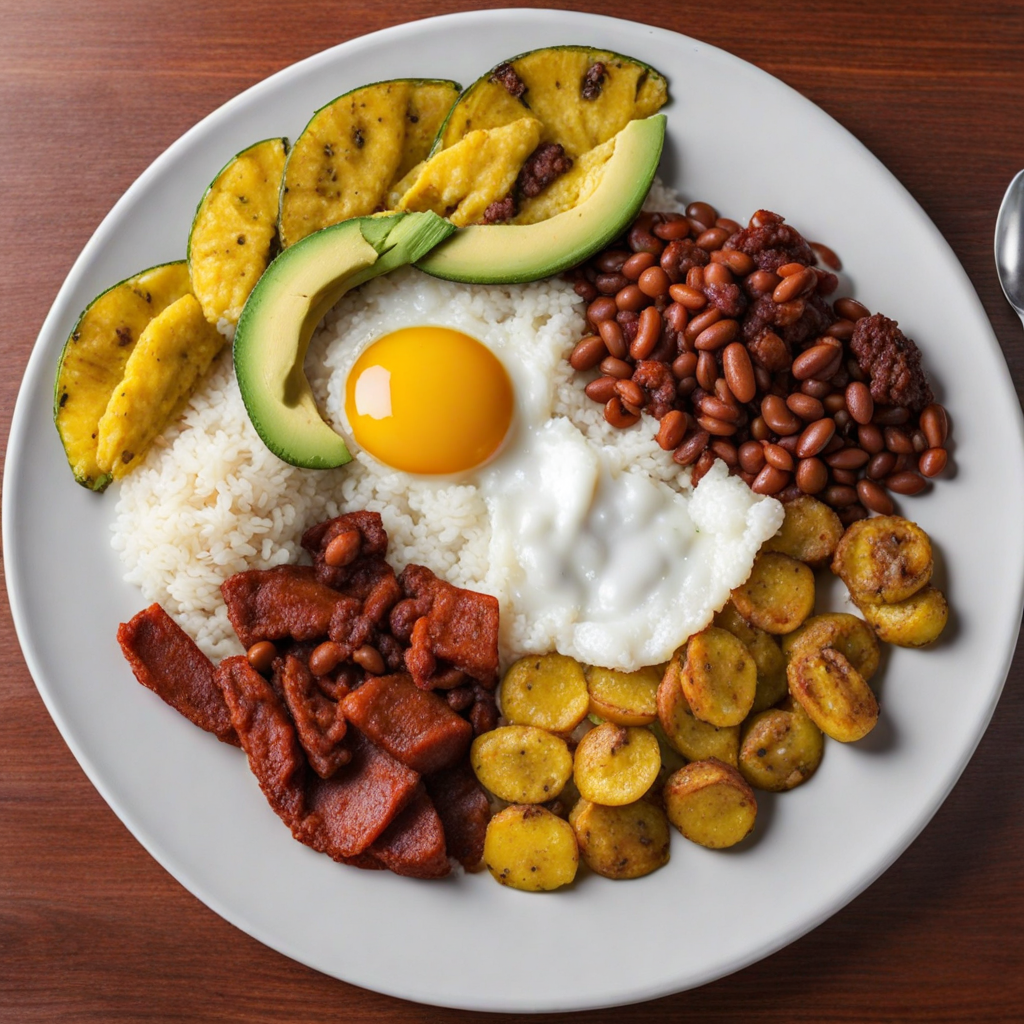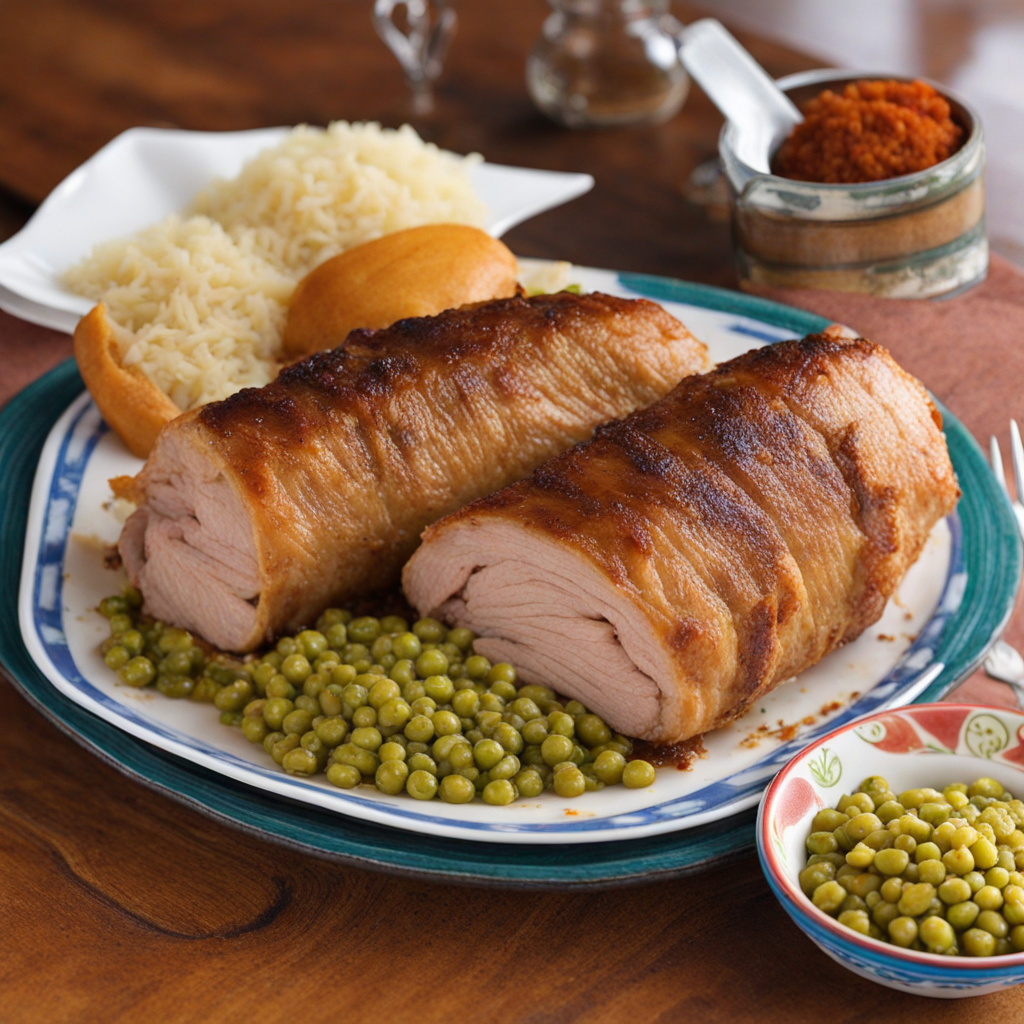Patacones
Patacones, also known as tostones in some regions, are a delightful Colombian dish made from green plantains that are fried, flattened, and then fried again to achieve a crispy texture. The process begins by slicing unripe plantains into thick pieces and frying them until they turn a light golden hue. After the initial fry, the pieces are removed and gently flattened using a tostonera or any flat surface, creating a disc shape that maximizes their surface area for the second fry. This technique yields a crunchy exterior while keeping the inside soft and slightly starchy, providing an irresistible contrast in texture. Once fried to a perfect golden brown, patacones can be seasoned simply with salt or dressed up with various toppings, making them a versatile snack or side dish. They often serve as a vehicle for a variety of delicious accompaniments such as hogao (a Colombian tomato-onion sauce), guacamole, or even shredded meats and seafood. Their neutral flavor allows them to pair well with an array of ingredients, making them a favorite in Colombian households and restaurants alike. Often enjoyed as a street food or appetizer, patacones are not just a tasty treat but also a reflection of Colombian culture, which emphasizes communal dining and sharing. The crispy plantains are perfect for dipping, making them an excellent choice for gatherings and celebrations. Whether you’re savoring them at a bustling market or in the comfort of your home, patacones offer a true taste of Colombia that is sure to enchant anyone looking for a new culinary adventure.
How It Became This Dish
The Rich History of Patacones: Colombia's Beloved Green Plantain Dish #### Origins of Patacones At its core, patacones, also known as "tostones" in many Caribbean and Central American countries, are twice-fried green plantains that have been a staple in Colombian cuisine for centuries. The origins of patacones can be traced back to the indigenous cultures of the region, particularly the Taino and Arawak peoples who inhabited the Caribbean islands and parts of northern South America. These communities cultivated plantains and bananas long before the arrival of Europeans. The cultivation of plantains, which are a type of banana that is starchier and less sweet than their yellow counterparts, became widespread due to their versatility and ability to thrive in tropical climates. The indigenous peoples of Colombia developed various cooking methods to prepare plantains, including boiling, roasting, and frying, leading to the creation of dishes like patacones. #### Cultural Significance Patacones are more than just a popular snack or side dish; they are deeply entrenched in Colombian culture and identity. They are often served during family gatherings, celebrations, and communal meals, symbolizing unity and togetherness. In Colombia, food is a vital aspect of social interaction, and patacones are frequently enjoyed alongside a variety of dishes, including grilled meats, ceviche, and stews. Different regions of Colombia have their own unique variations of patacones. In the coastal areas, where the Afro-Colombian influence is strong, patacones are often paired with seafood, while in the Andean region, they are more commonly enjoyed with meats and hearty sauces. This regional diversity reflects the broader cultural tapestry of Colombia, where indigenous, African, and Spanish influences intersect to create a vibrant culinary landscape. #### The Development of Patacones Over Time The development of patacones over time mirrors the changing dynamics of Colombian society. During the colonial period, the introduction of European agricultural practices and livestock transformed local foodways. The Spanish brought with them new ingredients and cooking techniques, which gradually integrated into indigenous cuisines. This melding of cultures contributed to the evolution of patacones, as they became more widely popular and adapted to local tastes. In the 20th century, as Colombia underwent significant social and economic transformations, patacones gained prominence in urban areas. The rise of cities and the increasing mobility of people facilitated the spread of culinary traditions. Street vendors and small eateries began to offer patacones as a convenient and affordable food option, making them accessible to a wider audience. This trend marked the transition of patacones from a traditional dish to a beloved fast-food item. The late 20th and early 21st centuries saw a resurgence of interest in traditional Colombian cuisine, spurred by a growing awareness of the country's culinary heritage. Chefs and food enthusiasts began to explore and celebrate the richness of Colombian flavors, bringing dishes like patacones into the spotlight. Restaurants specializing in Colombian food began to emerge both domestically and internationally, showcasing patacones as a quintessential component of Colombian gastronomy. #### Patacones: Preparation and Variations The preparation of patacones is an art form that involves selecting the right type of green plantain, which is crucial for achieving the desired texture and flavor. The plantains are peeled and sliced into thick rounds, then fried in hot oil until they are golden and slightly softened. After the first frying, the rounds are removed from the oil and flattened, typically using a flat surface or a specialized tool. They are then returned to the hot oil for a second frying, which gives them their signature crispy texture. While the traditional patacón is a simple yet satisfying dish, variations abound. Some cooks season the plantains with garlic, lime, or spices before frying, adding an extra layer of flavor. In Colombia, it is common to find patacones served with various toppings and accompaniments. A popular variation includes "patacones con hogao," where the crispy plantains are topped with a sauce made from tomatoes, onions, and spices. Additionally, patacones can be used as a base for more elaborate dishes, such as "patacones rellenos," where they are filled with ingredients like shredded meat, cheese, or avocado. #### Global Influence and Popularity As Colombian cuisine has gained recognition on the global stage, patacones have also found their way into the culinary repertoires of other countries. They are increasingly featured on menus in Latin American restaurants, where they are celebrated not only for their taste but also for their cultural significance. The rise of Colombian migration and the diaspora has further contributed to the global spread of patacones, as immigrants introduce their culinary traditions to new communities. Patacones have also become a symbol of resilience and cultural pride. For many Colombians, enjoying patacones is a nostalgic experience that evokes memories of home, family, and community. The dish transcends socioeconomic barriers, as it can be enjoyed by people from all walks of life, making it a unifying element within Colombian society. #### Conclusion Patacones are more than just a delicious food item; they are a reflection of Colombia's rich cultural heritage and history. From their indigenous roots to their modern-day adaptations, patacones encapsulate the flavors and traditions of a diverse nation. As Colombia continues to evolve, so too will the ways in which patacones are prepared, served, and celebrated, ensuring that this beloved dish remains an integral part of Colombian identity for generations to come. In a world increasingly dominated by fast food and globalization, patacones stand as a testament to the power of traditional cooking and the importance of preserving culinary heritage. With every crispy bite, one can taste the history, culture, and unity that patacones represent—a dish that is not only about sustenance but also about connection, celebration, and the enduring spirit of Colombia.
You may like
Discover local flavors from Colombia


